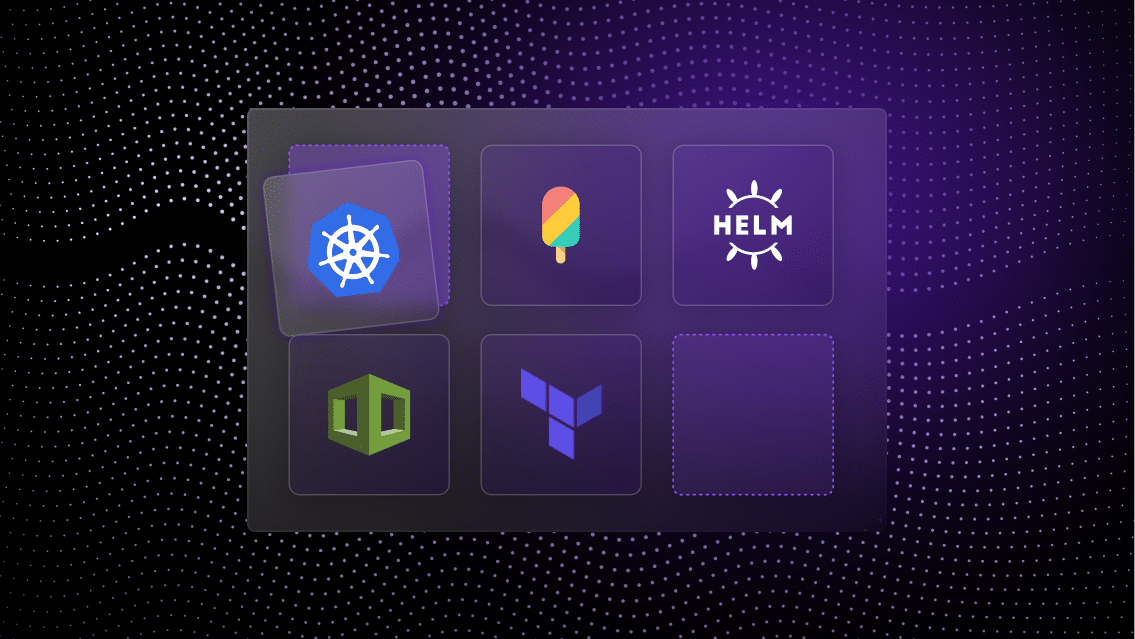In software engineering, the DevOps methodology emphasizes integration between development and operations teams. This integration enhances collaboration, automation, and efficiency all along the software development lifecycle.
DevOps tools and practices, such as CI/CD, Infrastructure as Code (IaC) deployment, container orchestration, and monitoring and security instrumentation, have all found their way into the software development lifecycle (SDLC). And they’ve become even more prevalent with the dominance of cloud infrastructure and the growing demands for AI-based applications.
In this post, we’ll highlight the most important DevOps tools for 2025 that can empower a DevOps team to achieve faster, more secure, and more efficient software delivery.
Key trends shaping DevOps in 2025
DevOps tools have evolved to steer complex, distributed infrastructures seamlessly, but three major trends are shaping their use today:
- The shift towards AI-driven automation and optimization throughout the software development lifecycle.
- The increasing need for tools that manage hybrid and multi-cloud environments.
- The importance of efficient management of AI workloads, including provisioning GPUs/TPUs.
Let’s take a look at the popular tools that are making that possible today.
Infrastructure as Code with Terraform
Terraform has revolutionized the way modern DevOps engineers work with cloud infrastructure. By allowing teams to define infrastructure using code, Terraform provides the flexibility to create and manage resources efficiently and consistently.
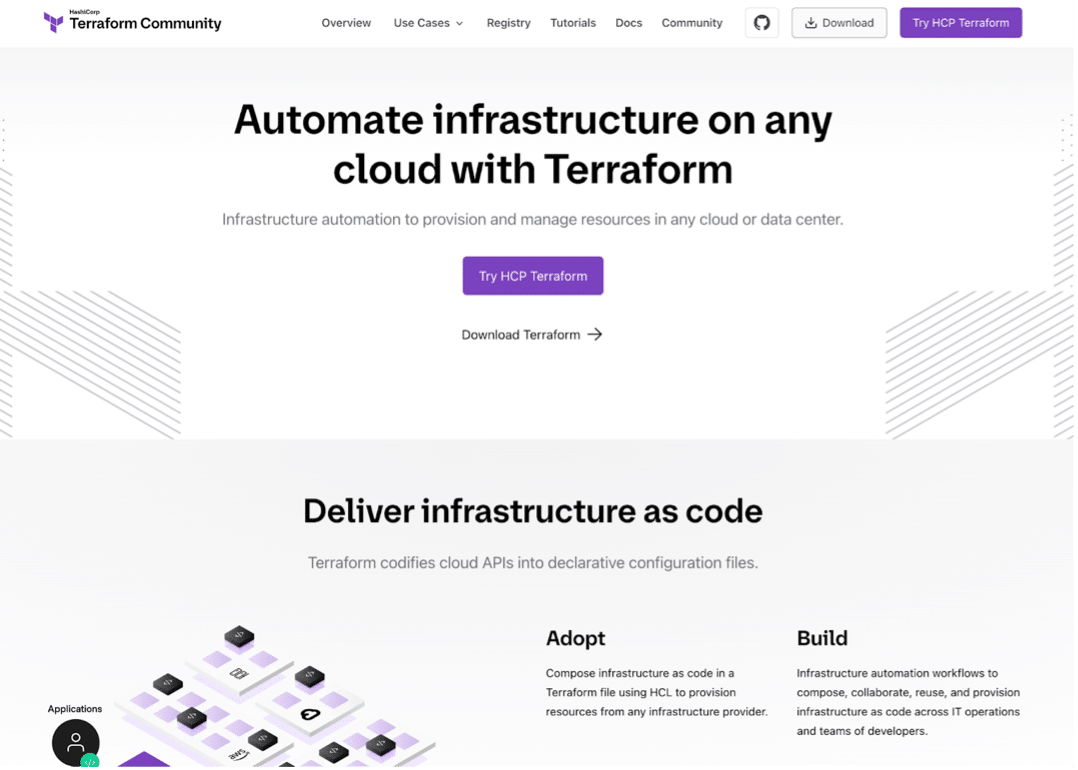
Key features of Terraform:
- Multi-cloud support: Terraform offers a plugin-based provider system that you can use to manage resources on the cloud providers of your choice from a single platform. This flexibility enhances the support for hybrid and multi-cloud strategies.
- Declarative HCL language: Terraform uses its own proprietary language called HCL which engineers can use to define a desired state for the infrastructure on the cloud. Once that state is defined, Terraform does the rest, provisioning the resources to meet that state.
- Open source automation tools: While HashiCorp made the decision to forego open source support in late 2023, prior versions of Terraform remain under the open source license, which provides greater flexibility and ability to integrate with other tools in use by any DevOps team.
Automated configuration management with Ansible
Ansible is an open source DevOps automation tool (acquired by RedHat) that provides configuration management to help teams deploy applications and better handle orchestration.
In a DevOps workflow, Ansible enhances user productivity by allowing engineering teams to define infrastructure as code, making configurations consistent, repeatable, and version-controlled.
Key features of Ansible:
- YAML-based playbooks: Ansible uses a human-readable YAML for configuration management, making it easier to understand and modify infrastructure without the need for extensive coding skills.
- Agentless architecture: Ansible is designed to work with simple SSH commands, so there’s no need to install separate agents in the target environments. That reduces complexity and resource overhead and improves security.
- Idempotent operations: Ansible’s architecture ensures that it produces the same result on every invocation no matter how often they are run. This guarantees deterministic results, allowing teams to manage infrastructure at scale and avoid configuration drift.
Container orchestration at scale with Kubernetes
Kubernetes is an open-source platform designed to run and orchestrate large-scale container-based workloads. It is crucial for a modern DevOps toolkit due to its ability to manage complex, distributed applications across multiple environments.
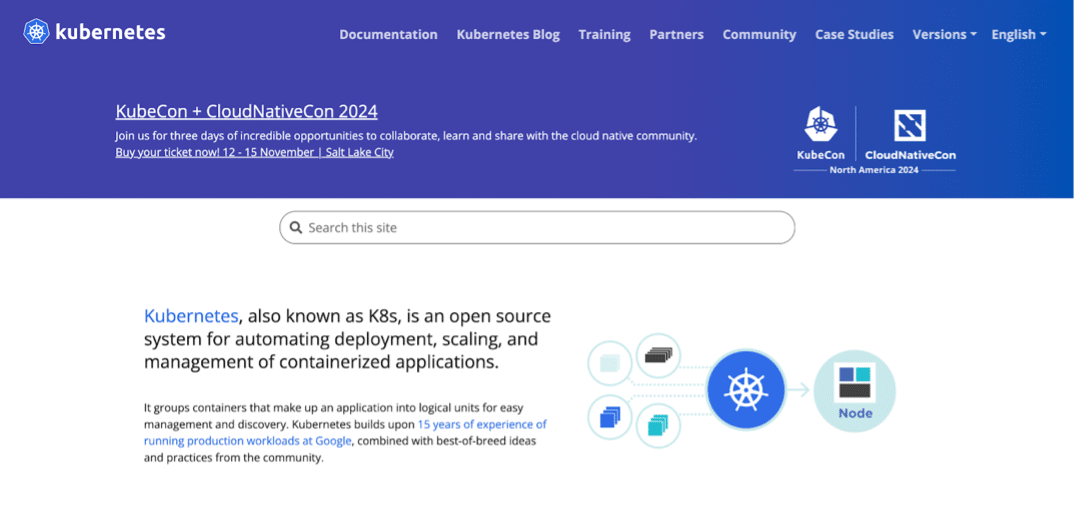
Key features of Kubernetes:
- Automated scaling: Kubernetes can automatically scale your containers up or down based on the current demand. That ensures that applications have the necessary resources during peak times and are used efficiently when demand is low.
- Rolling updates and rollbacks: When application versions are updated, Kubernetes allows teams to start deployments in a rolling fashion so that there is no downtime for the end users. Should there be any issue with a specific version, Kubernetes can automatically roll back to a stable version.
- Multi-tenancy support: Kubernetes allows users to run multi-tenant workloads within a single cluster by separating environments using Namespaces. Each namespace is logically isolated from one another, providing secure boundaries while using efficient resource utilization within the organization.
Helm: The Kubernetes package manager
Helm is a package manager for Kubernetes that simplifies application deployment and configuration within the cluster by standardizing the way to define, install, and upgrade applications by using shareable templates known as “Helm charts.”
Key features of Helm:
- Helm Charts: Charts are a packaged configuration definition that defines the desired state of a Kubernetes application. It simplifies deployment by encapsulating all the resources required for an application which makes it easy to deploy, version, and share applications across different environments.
- Version control and Release tracking: Helm keeps track of release history and manages application versions, making it easy to track changes over time.
- Dependency Management: Helm also acts as a dependency manager for applications, ensuring that all required components for an application (e.g., databases or other services) are deployed together with the application.
GitHub/GitLab/Bitbucket provide the foundations of version control
Popular web-based applications such as GitHub, GitLab, BitBucket, etc. provide a comprehensive solution to manage your repositories, track changes, collaborate on other projects, and integrate external tools into your workflow.
These serve as central hubs for managing code and workflows which facilitates automation by integrating with CI tools.
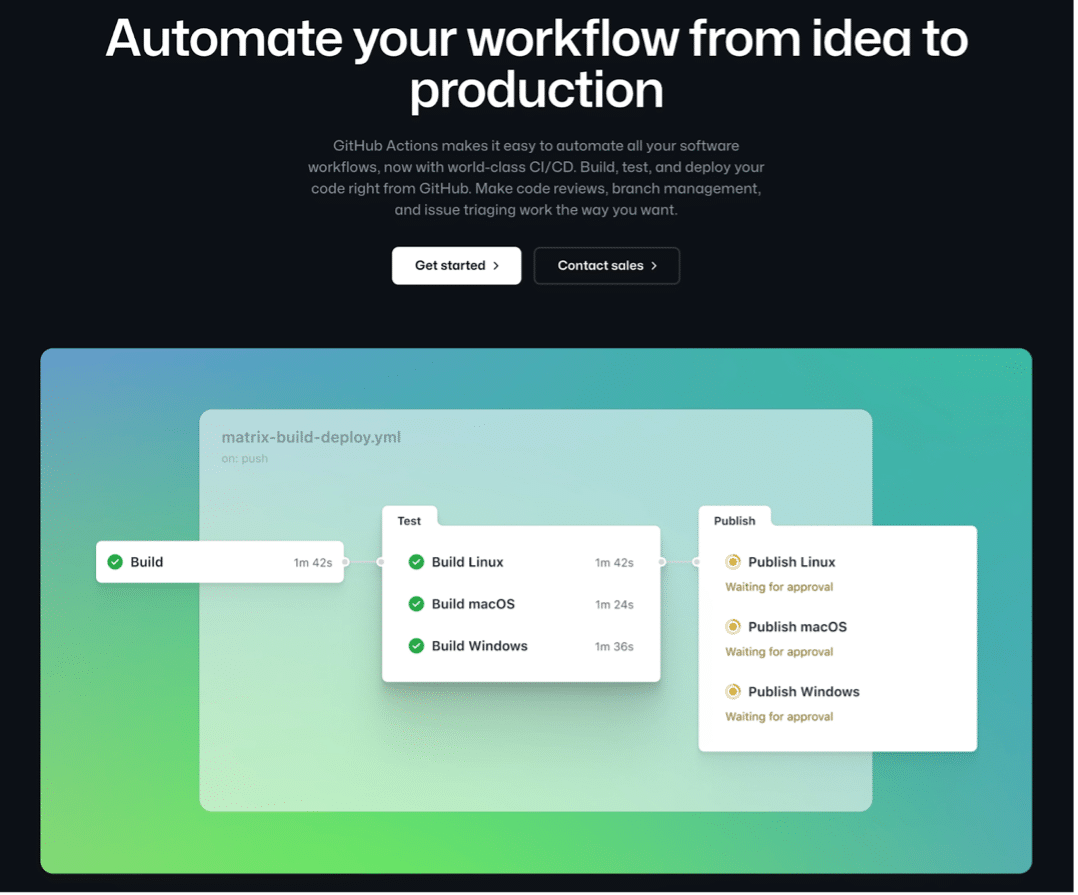
Key features of a version control system:
- Pull requests and code review: To be reliable, it is important to maintain software quality in production. Having a robust pull request enables software developers to propose changes, review, and discuss with team members before finally merging them into the codebase. That protects the codebase from accidental changes being pushed and ensures best practices are followed.
- Integration with CI/CD: Most popular version control systems have their implementation of a continuous integration pipeline. For example, Github has GitHub Actions which allow the team to trigger a pipeline as soon as code is pushed to a branch in the repository. The pipeline can be used to automate testing, build processes, and deploy artifacts directly enabling, faster and more reliable software delivery.
Monitoring and observability with Prometheus & Grafana
Effective observability and monitoring are key to running a reliable system in a distributed environment. Prometheus and Grafana are leading open source platforms in this domain. They also complement each other, providing native solutions for collecting application metrics, and visualizing, and analyzing across complex, distributed systems.
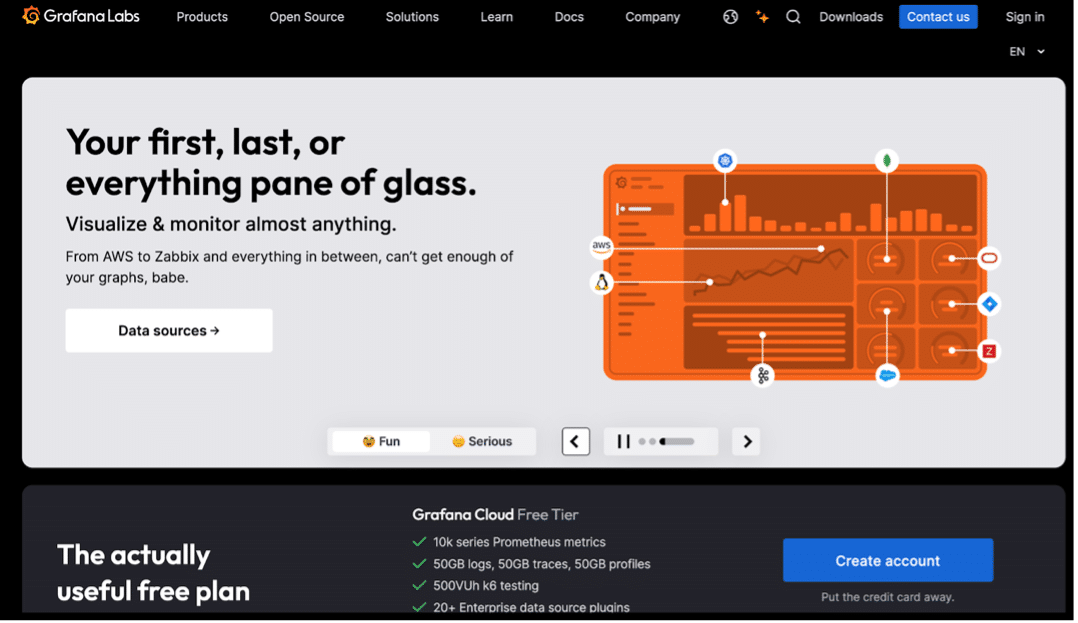
Key features of using Prometheus and Grafana:
- Flexible metrics collection: Prometheus uses a pull-based mechanism to collect metrics that are exposed by the applications’ metrics endpoints from disparate sources, making it ideal in dynamic cloud environments.
- Built-in alerting: Prometheus provides a built-in solution for alerting with Alertmanager, which allows teams to define custom alerting rules. The alerts are triggered when certain predefined thresholds are reached and then can be routed to various channels, such as Slack, email, etc.
- Dynamic and interactive dashboards: Grafana creates dashboards using the data collected by Prometheus. Visualizations, such as line charts and heat maps, allow DevOps teams to keep an eye on their resources and application performance efficiently.
GitOps for Kubernetes with Argo CD
ArgoCD is a declarative, GitOps-based deployment tool specialized for Kubernetes workloads.
Argo CD automates the deployment and management of applications, continuously monitoring Git repositories for changes and synchronizing applications with the defined state.
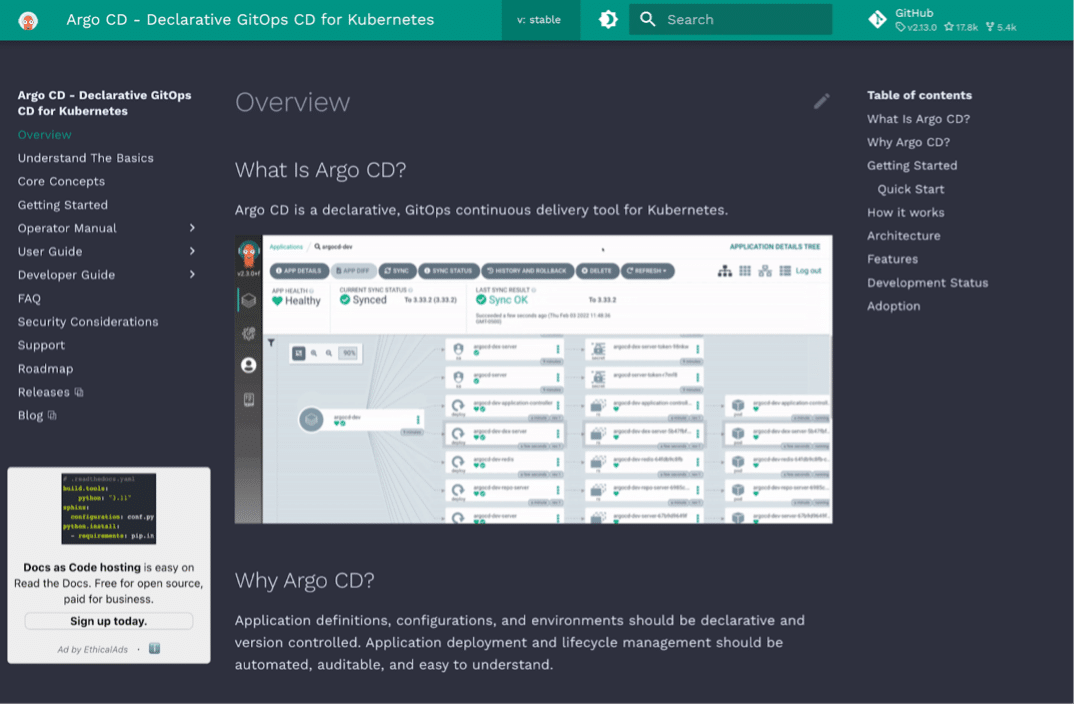
Key features of ArgoCD:
- GitOps-based deployments: ArgoCD is based on the fundamental principles of GitOps where the git repository serves as the single version of truth. As changes are merged to the main branch of the repository, ArgoCD synchronizes the repository with the Kubernetes cluster to keep it updated according to the latest manifests.
- Visual application dashboard: ArgoCD provides a visual web interface to manage Kubernetes resources in real time. Application status, logs, and health can be checked using the web dashboard, making it easier to spot and troubleshoot issues in production.
Emerging DevOps tools to watch in 2025
As DevOps evolves, tools that integrate AI and automation are becoming the norm to increase productivity and system reliability. Here’s a list of some of the emerging tools to keep an eye out for in 2025.
- GitHub Copilot: Originally built as an AI-powered code assistant, GitHub Copilot is now expanding into the DevOps area, leveraging OpenAI’s Codex that can help write CI/CD pipelines, automate configuration tasks, and generate code for infrastructure provisioning.
- Quali Torque for DevOps automation: Quali Torque is a cloud infrastructure automation platform designed to streamline and simplify the management of cloud environments throughout the DevOps lifecycle. It acts as a control plane for cloud resources, enabling DevOps engineers to create and leverage an inventory of all cloud infrastructure–including those discovered via the user’s cloud accounts as well as the Infrastructure as Code resources in their Git repositories. Generative AI tools enable users to automate the creation of ready-to-run blueprints for environments from the resources in their inventory, while also providing an intuitive and role-based self-service catalog that enables rapid provisioning without requiring security credentials or parameters. Torque is particularly beneficial for organizations dealing with “infrastructure sprawl” and escalating cloud costs, as it focuses on DevOps automation, cloud governance, and cloud cost optimization.
Takeaways
As we look forward to 2025, the DevOps landscape is evolving fast with a strong inclination toward automation and AI.
The tools highlighted in the article illustrate some of the most important technologies enhancing the DevOps practice.

